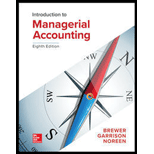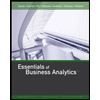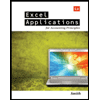
Building a Balanced Scorecard
Lost Peak ski resort was for many years a small, family-owned resort serving day skiers from nearby towns. Lost Peat was recently acquired by Western Resorts, a major ski resort operator. The new owners have plans to upgrade the resort into a destination resort for vacationers. As part of this plan, the new owners would like to make major improvements in the Powder S Lodge, the resort's on-the-hill cafeteria. The menu at the lodge is very limited—hamburgers, hot dogs: chili, tuna fish sandwiches, pizzas, French fries, and packaged snacks. With little competition, the previous owners of the resort felt no urgency to upgrade the food service at the lodge. If skiers want lunch on the mountain, the only alternatives are the Powder S Lodge or a brown bag lunch brought from home.
As part of the deal when acquiring Lost Peak: Western Resorts agreed to retain all of the current employees of the resort. The manager of the lodge, while hardworking and enthusiastic, has very little experience in the restaurant business. The manager is responsible for selecting the menu, finding and training employees, and overseeing daily operations. The kitchen staff prepare food and wash dishes. The dining room staff take orders, serve as cashiers, and clean the dining room area.
Shortly after taking over Lost Peak, management of Western Resorts held a day-long meeting with all of the employees of the Powder S Lodge to discuss the future of the ski resort and the new management's plans for the lodge. At the end of this meeting, management and lodge employees created a balanced scorecard for the lodge that would help guide operations for the coming ski season. Almost everyone who participated in the meeting seemed to be enthusiastic about the scorecard and management's plans for the lodge.
The following performance measures were included on the balanced scorecard for the Powder S Lodge:
a. Weekly Powder 8 Lodge sales
b. Weekly Powder 8 Lodge profit
c. Number of menu items
d. Dining area cleanliness as rated by a representative from Western Resorts management
e. Customer satisfaction with, menu choices as measured by customer surveys
f. Customer satisfaction with, service as measured by customer surveys g. Average time to take an order
h. Average time to prepare an order
1. Percentage of kitchen staff completing a basic cooking course at the local community college j. Percentage of dining room staff completing a basic hospitality7 course at the local community7 college
Western Resorts will pay for the costs of staff attending courses at the local community college.
Required:
1. Using the above performance measures, construct a balanced scorecard for the Powder 8 Lodge. Use Exhibit 10-5 as a guide. Use arrows to show causal links and indicate with a + or - whether the performance measure should increase or decrease.
2. What hypotheses are built into the balanced scorecard for the Powder 8 Lodge? Which of mese hyponeses do you believe are most questionable? Why?
3. How will management know if one of the hypotheses underlying the balanced scorecard is false?
Want to see the full answer?
Check out a sample textbook solution
Chapter 10 Solutions
Introduction To Managerial Accounting
- I need help with this General accounting question using the proper accounting approach.arrow_forwardPlease explain the solution to this general accounting problem with accurate principles.arrow_forwardKindly help me with this General accounting questions not use chart gpt please fast given solutionarrow_forward
- I am searching for the correct answer to this Financial accounting problem with proper accounting rules.arrow_forwardI am looking for the correct answer to this Financial accounting question with appropriate explanations.arrow_forwardEcho Tone Technologies reports annual sales of $90,000, and it expects sales to increase to $135,000 next year. The company has a degree of operating leverage (DOL) of 4.2. By what percentage should net income increase? A. 70% B. 189% C. 150% D. 210%arrow_forward
- Please provide the accurate answer to this general accounting problem using valid techniques.arrow_forwardNo chatgpt Which account will appear in the post-closing trial balance?A. Rent ExpenseB. Sales RevenueC. DividendsD. Capitalarrow_forwardI need help with this financial accounting question using the proper accounting approach.arrow_forward
 Essentials of Business Analytics (MindTap Course ...StatisticsISBN:9781305627734Author:Jeffrey D. Camm, James J. Cochran, Michael J. Fry, Jeffrey W. Ohlmann, David R. AndersonPublisher:Cengage Learning
Essentials of Business Analytics (MindTap Course ...StatisticsISBN:9781305627734Author:Jeffrey D. Camm, James J. Cochran, Michael J. Fry, Jeffrey W. Ohlmann, David R. AndersonPublisher:Cengage Learning Managerial AccountingAccountingISBN:9781337912020Author:Carl Warren, Ph.d. Cma William B. TaylerPublisher:South-Western College Pub
Managerial AccountingAccountingISBN:9781337912020Author:Carl Warren, Ph.d. Cma William B. TaylerPublisher:South-Western College Pub Financial And Managerial AccountingAccountingISBN:9781337902663Author:WARREN, Carl S.Publisher:Cengage Learning,
Financial And Managerial AccountingAccountingISBN:9781337902663Author:WARREN, Carl S.Publisher:Cengage Learning, Excel Applications for Accounting PrinciplesAccountingISBN:9781111581565Author:Gaylord N. SmithPublisher:Cengage Learning
Excel Applications for Accounting PrinciplesAccountingISBN:9781111581565Author:Gaylord N. SmithPublisher:Cengage Learning





